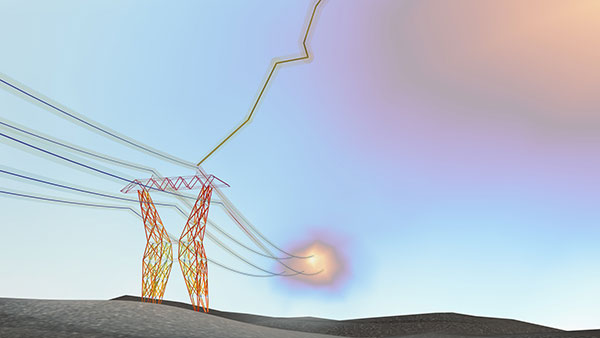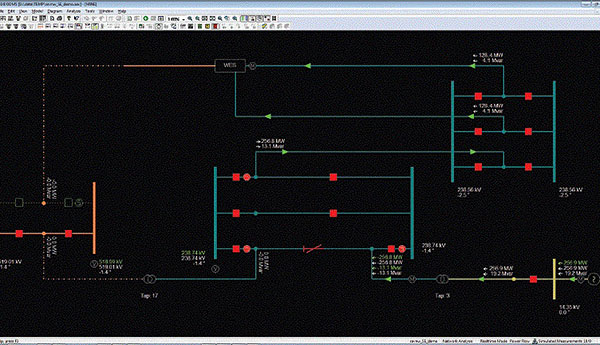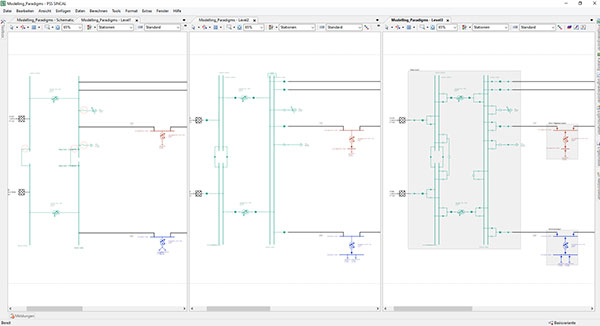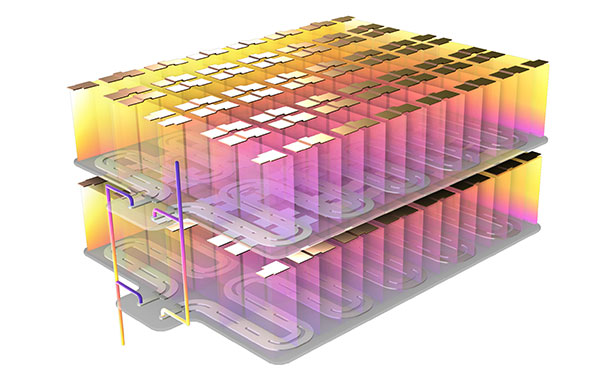
“Structural and acoustics simulation can be used to predict and mitigate issues like transformer vibration and noise, which are important for ensuring the longevity and reliability of grid components, particularly in densely populated areas.” —says Bjorn Sjodin, senior vice president of product management, COMSOL.
Latest News
February 1, 2024
Energy grids are bound to struggle, sooner or later, to meet demand and provide power to users when they need it, where they need it. Many grids are older and engineering tools and technology weren’t available when such infrastructure was originally designed.
Today’s energy needs have ticked upward, with a growing pressure to incorporate sustainable power resources when needed and where available. With new technology and better engineering tools, traditional power grids along with sustainable sources such as nuclear power, stand to benefit greatly in their future design.
Simulation and Modeling
Jim Taylor is the vice president of energy solutions at Siemens Grid Software U.S. Taylor emphasizes the importance of using simulation software for distribution electric networks as well as model management to organize planning, operations and protection within an electric utility for transmission and distribution networks to align information associated with the physical location and electrical properties of electrical networks and allow easy simulation results and model storing for future action and retrieval.
“Simulation technology is and will continue to be a key component for power utilities, which aim to accelerate the energy transition of power grids by adding mission-critical capabilities. Simulation technology can help grid operators to plan and design the most robust and resilient power grids, considering various scenarios, contingencies and uncertainties,” says Taylor.

He adds simulation technology will help optimize the power system operation and control using advanced algorithms and artificial intelligence to improve efficiency, reliability and stability. In addition, it helps to analyze and test the performance and behavior of power systems under different conditions, using realistic models and simulations that capture the electromechanical dynamics of the grid.
Taylor also says it’s important to apply such technology to manage and integrate distributed energy resources (DERs), such as renewable generation, storage, electric vehicles, demand response and microgrids, using flexible and scalable software solutions that enable data-driven decision-making.
Bjorn Sjodin is the senior vice president of product management for COMSOL. He, too, emphasizes that simulation software can be very useful in the analysis of new designs regarding the integration of renewable energy sources, improving grid resilience, and ensuring efficient and reliable power distribution.
“The ability to simulate various physical phenomena, such as electromagnetic fields, thermal effects and structural stresses, in a unified simulation environment is important. This allows for a deeper understanding of how different components of the power grid interact with and affect each other,” says Sjodin.

He also reminds us that electromagnetic field analysis is essential for designing transformers, transmission lines and various grid infrastructure components. And also important is understanding that thermal behavior is necessary for grid components where heat dissipation and thermal stresses can significantly affect performance and lifespan.
Lorenzo Slay is the director of energy with generative infrastructure design with Transcend. He notes the importance of AI and machine learning when it comes to power grid design.
“When it comes to the design of next-gen power systems, the technologies that will be most useful will be those that operate (or empower engineers to operate) across domains and disciplines,” says Slay. “AI and ML are increasingly seen as being at the nexus between data, describing what is or what has been, design objectives (or the desired future state), and design constraints (or best practices). This nexus is where the magic is happening in the industry right now.
“Tools like generative design are already helping to automate and streamline the development of critical infrastructure,” Slay adds. “However, AI/ML aren’t the only technologies that are going to be extremely useful. System simulation software and CAD tools that allow for cross-discipline synchronization are going to be similarly impactful over the next decade.”

“The future of grid simulation modeling and synchronization of the transmission and distribution networks for electric utilities will become more integrated due to the fundamental change from timing generation to exceed load requirements one hour in advance to where the load is managed to meet the generation capabilities for the next hour.” —Jim Taylor, Siemens Grid Software U.S.
Like Siemens’ Taylor, Slay believes that simulation technology will be a key strategic component of every design organization aiming to create more efficient, effective and sustainable power grids.
“Modeling software has been a core design tool for decades, but simulations and generative design software are increasingly the only way to develop solutions accurately and quickly for a wide range of scenarios. The ability to leverage those technologies is going to deliver a competitive advantage,” says Slay.
Going Nuclear
Nuclear power is often a challenge, as it is not only highly regulated but there are many constraints in its design. When it comes to the design of nuclear power plants, systems and sources as part of tomorrow’s advanced power grids, simulation also plays a large role.
“Over the years, we have seen simulation integrated into the design process of various components related to the nuclear industry,” says COMSOL’s Sjodin. “For example, we have seen simulation used in the design of generator circuit breakers (GCBs) for nuclear power plants. GCBs must be reliable and able to maintain performance even after long periods of time. By using the COMSOL Multiphysics simulation software, one can improve the current-carrying capacity of the GCBs, which can provide protection from current surges and provide dependable electricity generation.”
He says there is a growing consensus in the energy sector that a resurgent nuclear industry will play a vital role in realizing efforts to limit global warming. In fact, the International Energy Agency (IEA) believes that achieving net zero will be much harder without nuclear power.
Some experts predict a golden age for nuclear, operating in tandem with renewables to accelerate the shift away from fossil fuels. Most experts agree that nuclear power provides a huge opportunity to transform the energy industry into a modern, dynamic and agile sector and an integral part of our green, sustainable future.

That said, if the nuclear industry is to capitalize on this unique opportunity, the decommissioning of aging nuclear plants and legacy nuclear waste management must be delivered efficiently and safely.
Nisar Ahamad is a vice president and head of industries and sustainability for Capgemini Engineering. He says there is a growing consensus in the energy sector that a resurgent nuclear industry will play a vital role in realizing efforts to limit global warming. In fact, he points out, the IEA believes that achieving net zero will be much harder without nuclear power.
“Some commentators predict a golden age for nuclear [power], operating in tandem with renewables to accelerate the shift away from fossil fuels,” says Ahamad. “Most experts agree that nuclear power provides a huge opportunity to transform the energy industry into a modern, dynamic and agile sector and an integral part of our green, sustainable future. That said, if the nuclear industry is to capitalize on this unique opportunity, the decommissioning of aging nuclear plants and management of legacy nuclear waste must be delivered efficiently and safely.
“I believe that the vanguard of new nuclear power transformation will be small modular reactors (SMRs). Based on proven reactor designs, their small scale, modular construction and high-power density makes them ideal for broad scale deployment for a variety of use cases, applications and industries,” he adds.
Toward a Resilient Energy Future
Scott Parent is a vice president and field chief technology officer of energy, aerospace and industrials with Ansys. He says that existing power grids often struggle to meet current and future demands, making simulation a proactive strategy for ensuring the safety of high-voltage grids. Like many others we spoke to, Parent believes that simulations, including predictive analytics for renewable energy integration and real-time monitoring, drive the evolution of resilient, adaptive and sustainable power grids.
“Embracing simulation technologies is a strategic imperative for navigating complexities and shaping the future energy landscape,” he says. “It is essential to emphasize the importance of collaboration and alignment in the energy industry and work closely with government policymakers to ensure long-term viability and commitment to the sector.

“Integrating various simulation and digital engineering tools and fostering industry-wide effort will be key to achieving holistic and functional solutions for the design and management of next-gen power grids,” Parent says. “This synergistic approach will enable us to navigate the complexities of modern energy systems and create a resilient and sustainable energy future.” DE
More COMSOL Coverage
Subscribe to our FREE magazine, FREE email newsletters or both!
Latest News
About the Author
Jim Romeo is a freelance writer based in Chesapeake, VA. Send e-mail about this article to [email protected].
Follow DE





